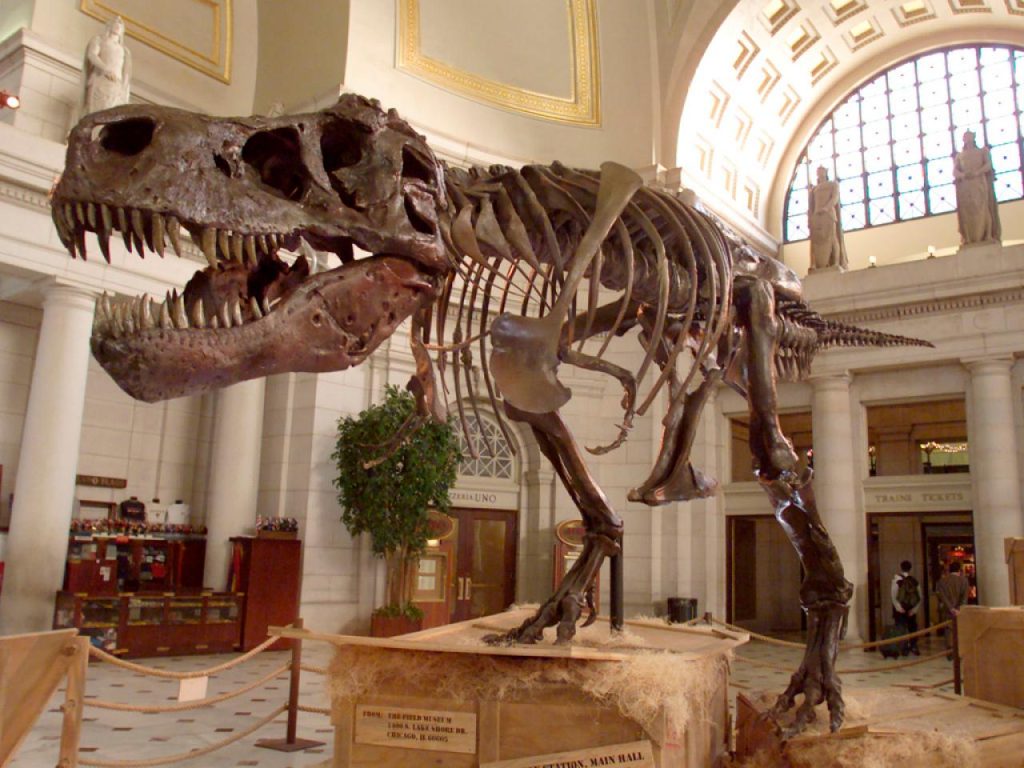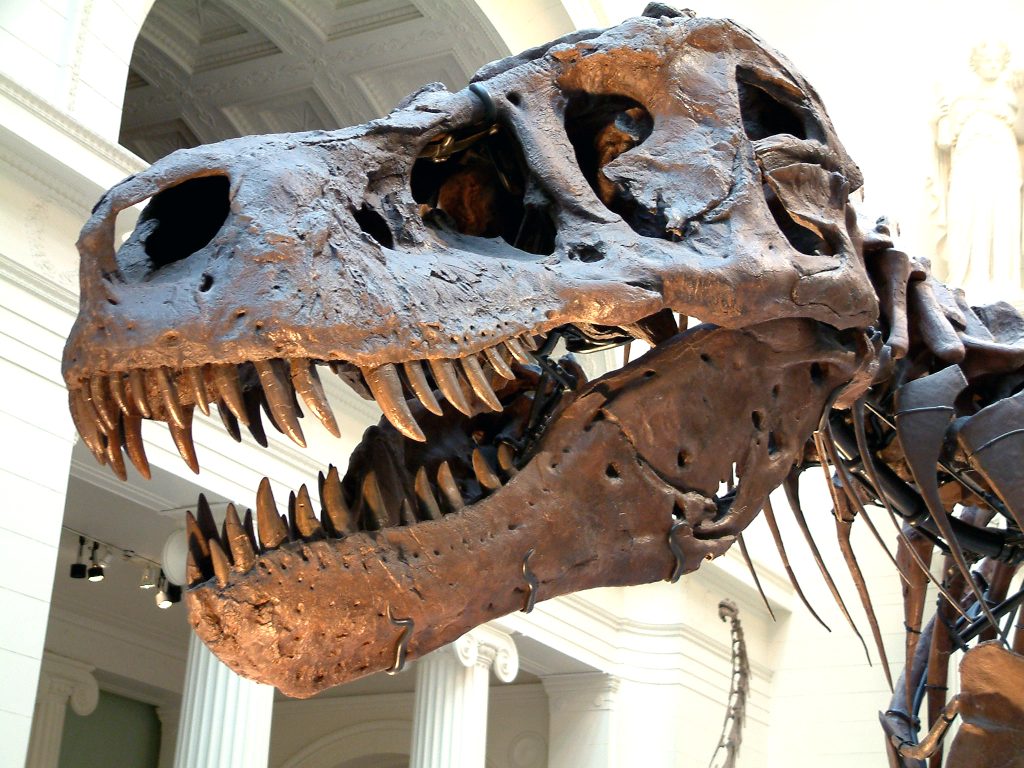New research suggests the iconic predator “grew up” in South Dakota and other parts of western North America
STURGIS, S.D. – The fearsome Tyrannosaurus rex may have evolved and matured as a species right here in South Dakota and other parts of western North America, according to new research published May 7 in the journal Royal Society Open Science.
The study challenges previous theories about the iconic dinosaur’s origins by suggesting T. rex developed into the apex predator we recognize today after its direct ancestors migrated from Asia to North America around 72 million years ago. They crossed an ancient land bridge that connected Siberia and Alaska, according to findings published on the journal’s website.
Debating dinosaur origins
Lead author Cassius Morrison, a doctoral student at University College London, told Live Science, “The geographic origin of T. rex is the subject of fierce debate. Paleontologists have been divided over whether its ancestor came from Asia or North America.”
Morrison said the research team used mathematical modeling that incorporated fossil discoveries, evolutionary relationships among dinosaur species, and climate conditions of the Late Cretaceous period, as described in the Royal Society Open Science article.
“Our modeling suggests the ‘grandparents’ of T. rex likely came to North America from Asia, crossing the Bering Strait between what is now Siberia and Alaska,” Morrison told Live Science.
South Dakota’s T. rex treasures and troubles
South Dakota has been a hotspot for T. rex discoveries and fossil-related legal conflicts. According to the Black Hills Institute, the most complete T. rex skeleton ever found, nicknamed “Sue,” was discovered in 1990 near Faith, South Dakota, on the Cheyenne River Sioux reservation. The 67-million-year-old fossil, named after discoverer Sue Hendrickson, was 90 percent complete and eventually sold at auction for $8.3 million, according to records from the Field Museum of Natural History in Chicago, where Sue is now displayed.
The discovery put Faith, a town of 421 people, on the map, earning it the nickname “T. rex Capital of the World,” according to Travel South Dakota.
The “Sue” case remains the most famous fossil dispute in state history. It involved the FBI, the Cheyenne River Sioux Tribe, and the Black Hills Institute of Geological Research. According to records from the Field Museum, the legal battle concluded with the fossil being sold at auction in 1997.
More recently, The Dakota Scout reported that U.S. District Judge Charles B. Kornmann imposed $2,000 in sanctions related to a dispute between a Texas fossil company and a Montana paleontologist over a missing triceratops skull. The case shows that fossil ownership conflicts continue to this day.
Migration theory gains support
Steve Brusatte, a paleontologist at the University of Edinburgh who worked on earlier T. rex research, told Live Science the new study was “fine scholarly work.” Brusatte said, “T. rex was the quintessential American dinosaur: big, bold, ferocious, the ruler of western North America during the final years of the Cretaceous. But it was actually an immigrant.”
The research suggests that T. rex ancestors crossed from Asia around the time when sea levels dropped, creating a land bridge between continents. This migration likely occurred during the Late Campanian to Early Maastrichtian ages, according to the study in Royal Society Open Science.
T. rex lived 67 to 66 million years ago and grew to impressive dimensions: 12.5 feet tall at the hips and up to 41 feet long, based on fossil evidence reported by Live Science. Most fossils have been found in Montana, South Dakota, and Alberta, Canada, a region that was once part of an island continent called Laramidia, according to the researchers.
Evolution of giants
The study also examined why tyrannosaurs like T. rex grew to such enormous sizes. Charlie Scherer, a co-author of the study, told Live Science, “They likely grew to such gigantic sizes to replace the equally giant carcharodontosaurid theropods that went extinct about 90 million years ago.”
Researchers believe tyrannosaurs and their relatives may have thrived after a global warming event 92 million years ago known as the Cretaceous Thermal Maximum. That was followed by a cooling period that allowed them to grow larger, according to the study published in Royal Society Open Science.
For South Dakotans, the research adds another chapter to the state’s rich paleontological heritage, which continues to draw researchers, tourists and, occasionally, legal disputes as the quest to understand these ancient creatures goes on.



